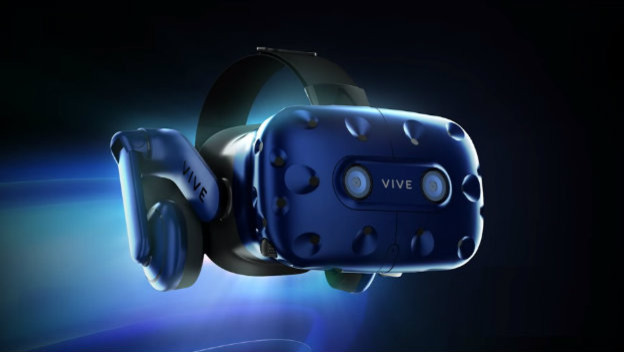Every day, it seems like more and more VR news is slipping into the mainstream. But why? A lot of times, it can feel like it’s in the news for porn-related issues. After all, there are all sorts of press releases and announcements from various websites and companies about how they use the tech. But there’s more to it than that! Sony expects the PlayStation VR game library to double in 2018, going from about 150 games to 280! Oculus drops the price of the Oculus Rift! The biggest news, as of late, has come from the HTC Vive corner of the virtual reality sphere. The company is planning to drop the Vive Pro on the market. And, as it does, it gets us thinking about what VR should be and if the Vive Pro is starting to inch the technology in a direction where it could be a viable purchase in the next few years.
Of course, I’m not suggesting people immediately jump onboard the VR train immediately. The technology is still too new, uncertain, expensive, and unstable. After all, the HTC Vive itself is proof of that. The model that is pervasive was released back on April 5, 2016. Already, the Vive Pro is going to make it obsolete. That is as good an indication as any that people should give it a few years before trying to consider this a mainstream device. But the Vive Pro improvements make it seem like something people could want.
After all, the Vive Pro makes a lot of improvements that make a headset more feasible. The original model only had a 2160×1200 resolution, while this new one has 2880×1600 resolution. There are dual OLEDs, it has a sizing dial to make it more comfortable for each user and mold better to their head. It will have dual noise-cancelling microphones and dual front-facing cameras. (The original Vive had only one camera and mic.) There will be the improved USB-C connectors. Yet, it works with the Vive accessories we already have. This new model proves shows not only what HTC and Valve has is working, but that the companies are working to make sure it keeps getting necessary upgrades people not only want, but need.
The other big update is the Vive Wireless Adaptor. Until now, we haven’t had the completely free VR experience people dream of. There are messy wires in the way. But the Vive Wireless Adaptor, which works with the Vive and Vive Pro, allows people to cut cords. While there are sure to be initial issues with the launch adaptor and its capabilities, this is huge for anyone who thinks VR could have a permanent place in our homes. Making it completely wireless, so we don’t have to worry about safety issues or reaching the edge of an immersion-breaking boundary, is exactly what the technology needs.

But, while these are strides in the right direction, there are still improvements we need to see. While that 2880×1600 is an improvement, it is going to have to improve. Because of how close the display is, we will still have to settle for low resolutions. It would be great to see more tracked glove controllers, so we do not have to settle for DualShock 4s, Oculus Touch, or Vive controllers. Tracking can be an issue, since we have to rely on external equipment to “see” our movements, and having technology that can sense on its own would be huge. And, of course, the dream is to have an elaborate VR headset that does not require a PC or PlayStation 4 to use.
The Vive Pro is a move in the right direction. Expectations are naturally high for this technology, because we all are hoping for the biggest and best from VR. Things aren’t quite where everyone wants them to be yet. That is quite a ways away. But it seems like this new headset could be on the right track to doing what people want and need. And, if things do continue along this positive trend, a VR headset could be both a safe and wise investment by 2020.
